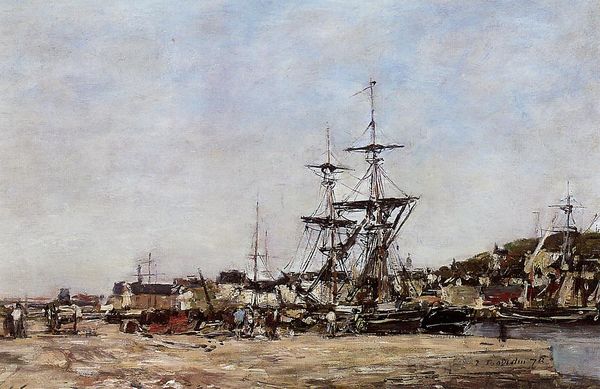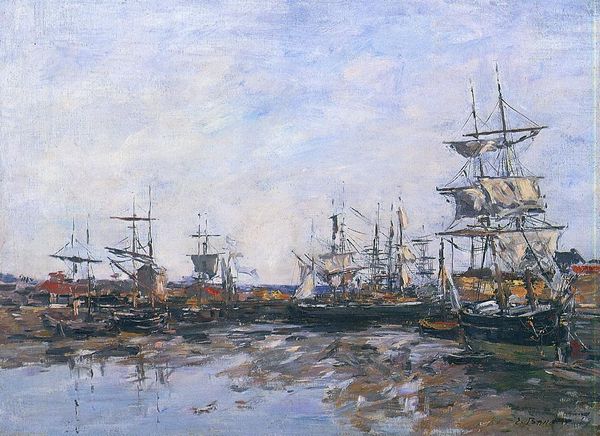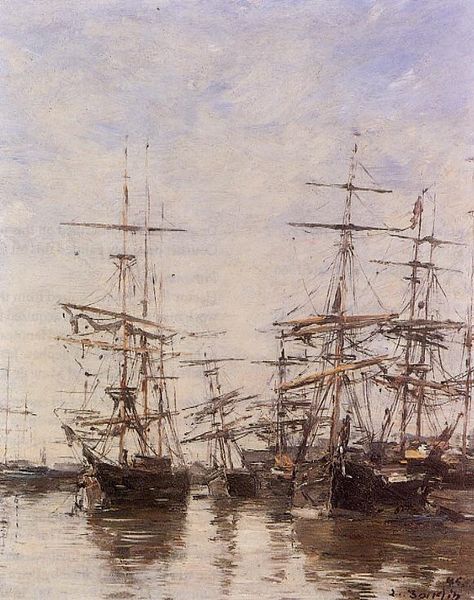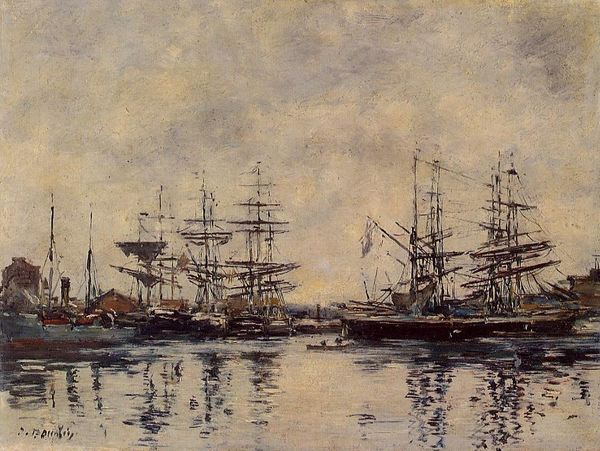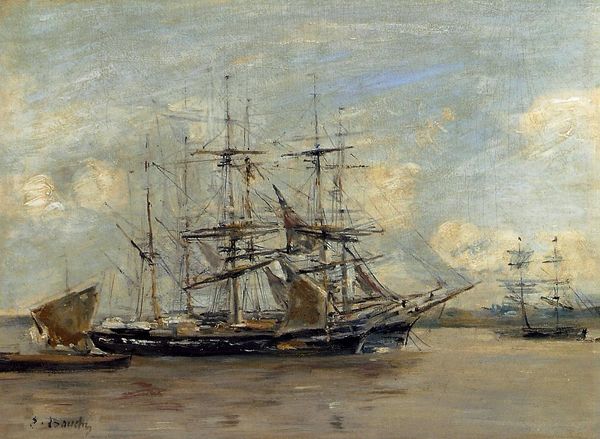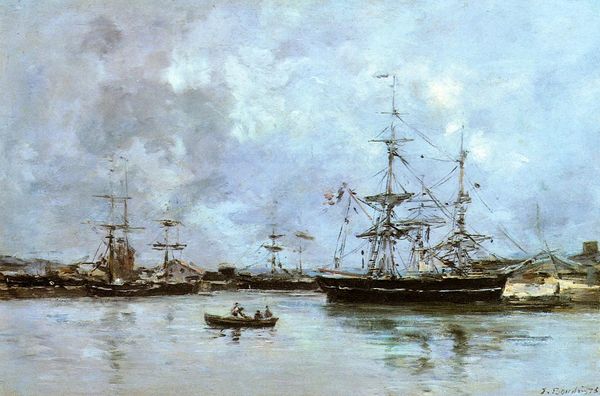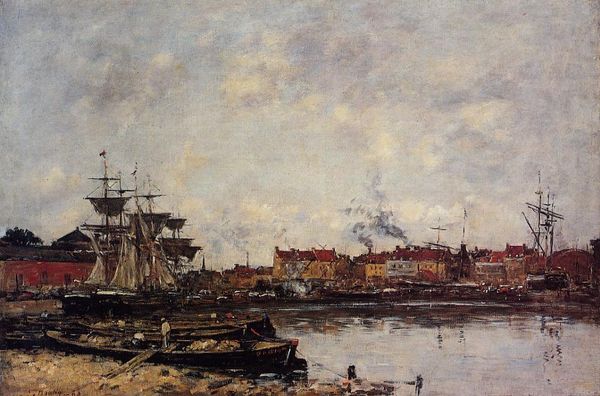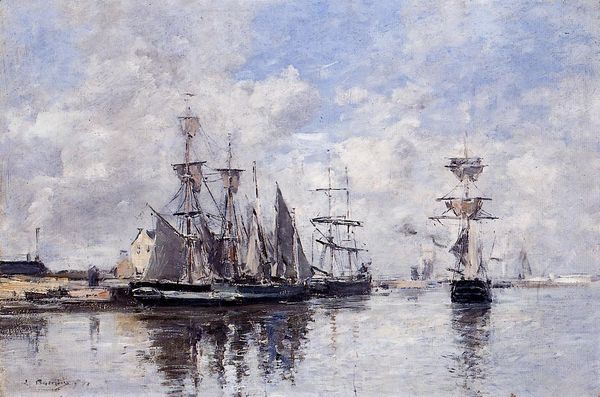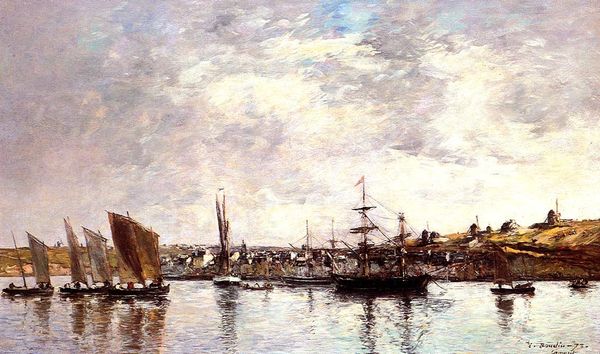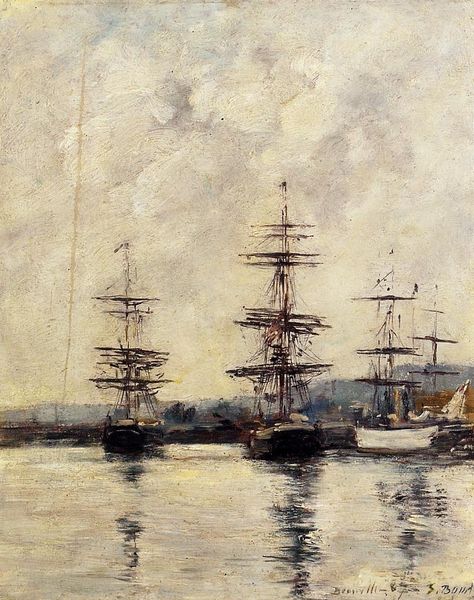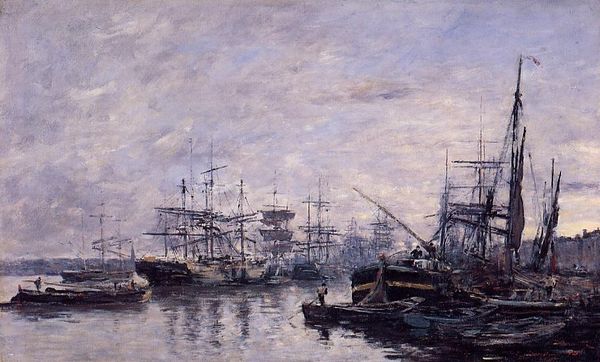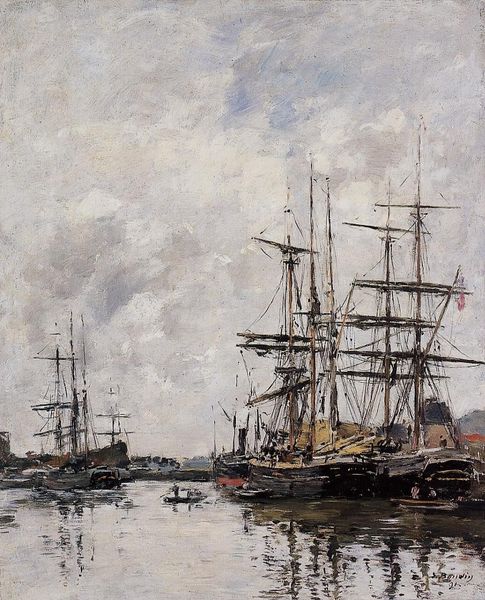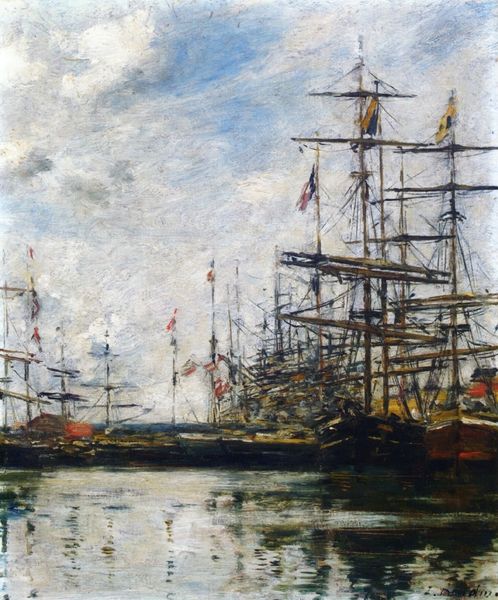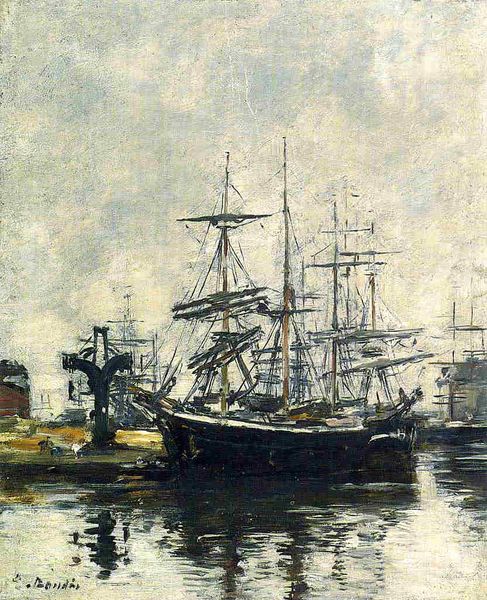
painting, plein-air, oil-paint
#
ship
#
painting
#
impressionism
#
plein-air
#
oil-paint
#
landscape
#
oil painting
#
water
Copyright: Public domain
Editor: We are looking at "Deauville, Docked Boats," an oil painting by Eugène Boudin from 1874. I'm struck by how the muted colors create a somewhat melancholic mood, despite the maritime activity. What do you see in this piece? Curator: This painting offers us a glimpse into the socio-economic dynamics of 19th-century port cities. Boudin wasn't just capturing a pretty scene; he was documenting a pivotal moment in the development of global trade and, consequently, labor. How do you interpret the figures depicted near the boats? Editor: I see people gathered, perhaps waiting or working. Curator: Exactly. Now, consider the broader implications: These ships weren't just transporting goods; they were facilitating colonial expansion and resource extraction. Boudin, painting *en plein air*, consciously or unconsciously, was embedding himself in a landscape shaped by these historical forces. Do you see a connection between the fleeting style of Impressionism and the transience of maritime labor? Editor: I hadn't thought of it that way, but the quick brushstrokes almost feel like a visual echo of the constant movement and labor. Curator: Precisely. Art doesn't exist in a vacuum; it's intertwined with political, economic, and social realities. It makes me wonder how his rendering of these boats can also reflect gender and labor in coastal areas. What do you think about that? Editor: This definitely opens up a richer understanding of Boudin's work, connecting it to wider conversations about history and society. Thanks! Curator: Absolutely! Recognizing art as a historical artifact deepens our appreciation, transforming a mere seascape into a compelling record of a complex era.
Comments
No comments
Be the first to comment and join the conversation on the ultimate creative platform.
